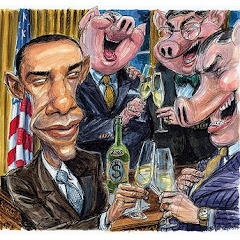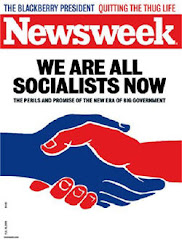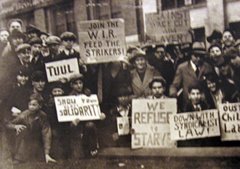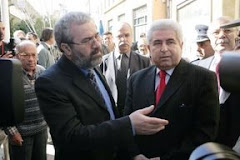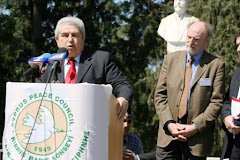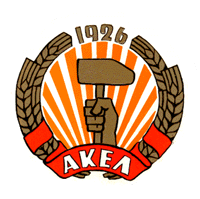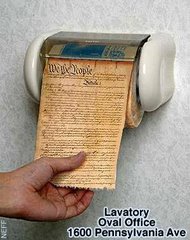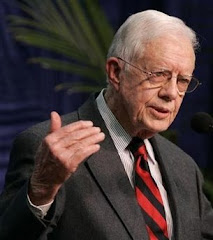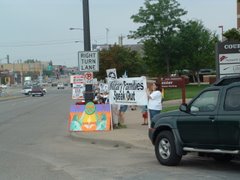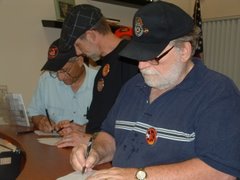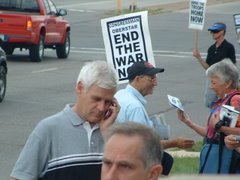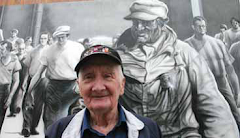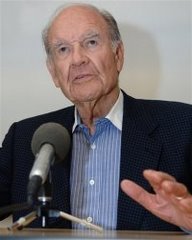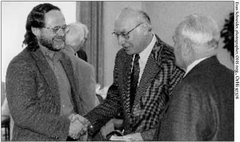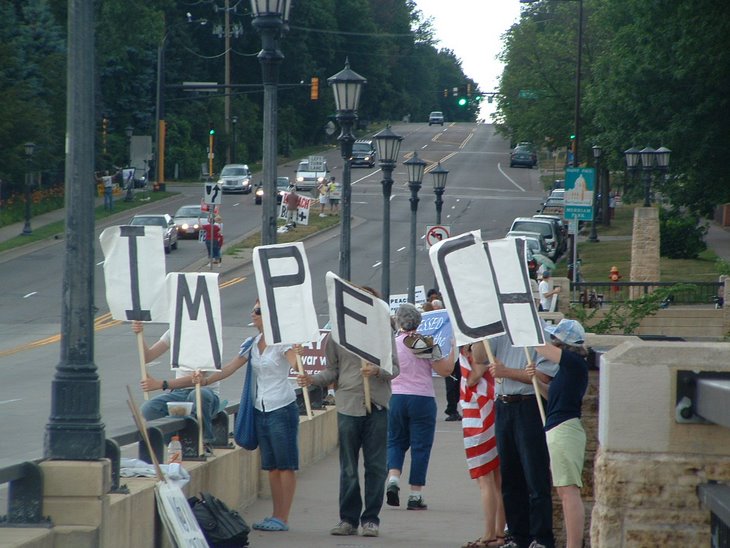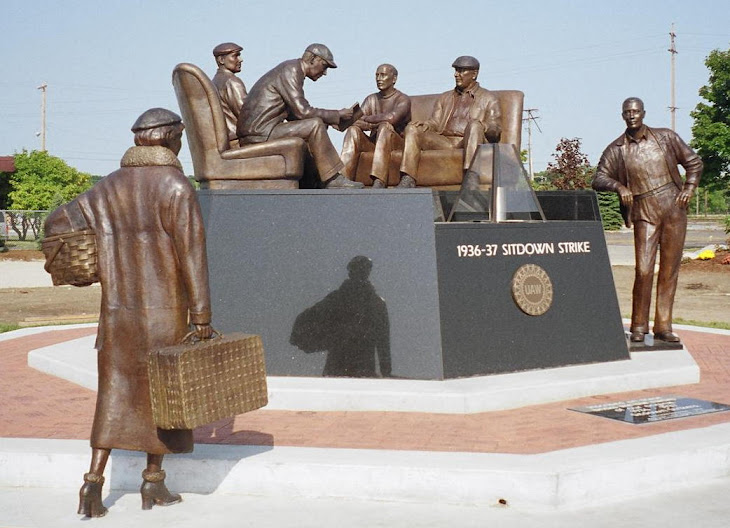Saturday, June 10, 2017
Speculation...
There is a great deal of speculation as to who is telling the truth: Comey or Trump.
Why would anyone believe either one?
They are both liars.
Why would anyone believe either one?
They are both liars.
Just wondering...
Beyond this Trump-Comey fiasco, I wonder if anything else is going on in the world worth knowing about?
Terrorism seems to take place very conveniently timed to the plans of the reactionaries.
I'm wondering about all of these terrorist bombings.
For many years outfits like the Pinkerton Detective Agency, the FBI and CIA have been involved in bombings and then framing innocent people or using these bombings to the political advantage of fascist governments.
In Canada, the RCMP was involved in a bombing and then blaming strikers.
The detective agency Altegrity/USIS has instigated violence in many
workplaces in attempts to disrupt union organizing campaigns.
I find it very strange three terrorist attacks took place in London at the same time conveniently to sway the elections for the Conservatives and all the perpetrators were shot dead within eight minutes; how convenient... none of the perpetrators were captured alive even though most were apparently unarmed.
I find it very strange three terrorist attacks took place in London at the same time conveniently to sway the elections for the Conservatives and all the perpetrators were shot dead within eight minutes; how convenient... none of the perpetrators were captured alive even though most were apparently unarmed.
How could it be?
How could it be that not one single Senator asked
James Comey if the United States has ever meddled in the affairs of the
Soviet Union and Russia?
James Comey cries...
Comey
cries he doesn't like being defamed yet he made a career out of
defaming people in an attempt to "neutralize" people involved in the
struggles for peace, social and economic justice.
Now let these bastards fight among themselves.
Now let these bastards fight among themselves.
US electoral interference in the Philippines (2 of 7)
· Written by Ken Fuller
· Tuesday, 06 June 2017 00:00
· Daily Tribune
Douglas MacArthur’s eagerness to liberate the islands which had so far been by-passed may be partly explained by the fact that, according to his biographer Dorris Clayton James, “Roxas’ faction was exceedingly anxious to have the congressional representatives from the south liberated so that a quorum would not be lacking in the Philippine Senate and House at the June session.”
On June 8, 1945, MacArthur paid a personal visit to the penal colony on Palawan to hold discussions with some of his pre-war political contacts who were now held as collaborators. It may be significant that this was one day before Congress was summoned; of the 98 representatives, 70 were present, eleven were dead and 17 were still detained; of the 24 senators, only 13 were present, two were dead, two had still not arrived in Manila and seven were detained.
Despite the fact that Congress was thus short of a quorum, Manuel Roxas, MacArthur’s presidential candidate, was elected president of the Senate and chairman of the powerful committee on appointments.
The Philippine Trade Bill would require the Philippines to amend its Constitution to concede equal rights — “parity” — to United States’ citizens and corporations with regard to the ownership and exploitation of natural resources and utilities; under the Tydings-McDuffie Act, “parity” had been envisaged only for the Commonwealth period.
This new Act was sponsored by Paul McNutt, the last High Commissioner and the first US Ambassador to the Philippines. According to Senator Millard Tydings in evidence to the US House Ways and Means Committee in March 1946, McNutt was “opposed to Philippine independence, and if you would ask him he would tell you so. The truth of the matter is that most of the people, outside the Filipinos, who favor this bill are fundamentally opposed to Philippine independence... Their whole philosophy is to keep the Philippines economically even though we lose them politically.”
When McNutt traveled to Washington in February 1946 in order to lobby for the Bill, he made clear his view that the collaboration issue was for the Filipinos to decide. In his briefcase at the time, however, was the confidential report by Walter Hutchinson of the Attorney-General’s office which recommended that Washington should take action against those high-ranking Filipinos, including Roxas, who had signed the declaration of war against the USA.
According to Hernando Abaya, although the Trade Bill was redrafted four times, this redrafting was directed by McNutt and his supporters.
Like many wealthy Americans with an involvement in policy matters in the Philippines, McNutt was further enriched in the process.In 1948 he started an insurance company with just P50,000. By 1966 the company reported total assets of P270 million. Together with two sister-companies, it would represent the interests of US businessman C. V. Starr. Clearly, “parity” worked rather well for Paul McNutt.
The Trade Act would be underpinned by the Philippine Rehabilitation Act, under the terms of which $625 million would be paid by the United States in war damages — but no payment of over $500 would be made unless “parity” had been agreed.
The provisions of the Act would prove to be a major issue in the elections set for April 1946. Roxas, as might be expected, favored the Bill, while Sergio Osmeña opposed the “parity” provisions. Roxas therefore led a breakaway from the Nacionalista Party — the Liberal Party.
During the election campaign the Military Police was given a free hand to support Roxas in Central Luzon. In Nueva Ecija, the MP garrisons were strengthened to 2,000 men. Meetings were fired upon and homes searched. The offices of the progressive Democratic Alliance (DA) were raided and equipment smashed. On the eve of the poll, the chairman of the Pampanga DA and his son were both kidnapped and killed.
In the April 1946 elections the DA contested one-fifth of the congressional seats and won 152,361 (six percent) of the votes cast, electing six representatives in Central Luzon and one Nacionalista, giving Osmeña a clear majority in the region.
Nationally, however, Roxas won the day, although he now had a problem: The Bell Trade Act required an amendment to the Philippine Constitution, something which could only be effected by an affirmative vote of three-quarters of the members of both Houses. Thus, to be lawful the amendment should have received the votes of 18 of the 24 senators and 73 of the 98 Representatives.
However, Roxas suspended the successful DA and Nacionalista candidates from Central Luzon on the grounds that their elections had been characterized by the absence of peace and stability.
In the Senate, Roxas allowed senators who had been indicted by the People’s Court for collaboration to take their seats, while suspending three opposition senators for alleged electoral irregularities. Although in law only the Electoral Tribunal could deprive the suspended members of their votes, the Liberal Party majority ruled that their votes should not be counted. This meant that the constitutional amendment could now be passed on the affirmative vote of 68 Representatives and 16 Senators — which, to the very vote, it was.
This was US electoral interference at work.
The Filipino flag that revolutionary general Emilio Aguinaldo handed over to Roxas at the “independence” ceremony on July 4, 1946 was the same one that the revolutionary veteran had presented to Jose P. Laurel when the Japanese had granted “independence” in 1943.
Here, in symbolic form, was illustrated the reasoning of the USA in dealing so lightly with the collaborators: Most of those officials who had betrayed their country to the Japanese could be relied upon to betray it all over again to US capital.
And the golden pig award goes to.... Hunter Harrison
In an ordinary year, CEOs like Kent and Broussard might be frontrunners for any CEO pay dishonors. But we do not live in ordinary times. This year, one grasping top exec has blown away the competition. Meet our Mr. Corporate Greed 2017: Hunter Harrison, the newly hired chief exec at the railroad powerhouse CSX.
The 72-year-old Harrison didn’t come cheap. To take the reins at CSX, he demanded a four-year stock-and-cash pay package that his fans on the CSX board calculated would cost $230 million — and CSX officialdom initially pegged at an even grander $300 million.
Some context: In Harrison’s last gig, running the Canadian Pacific
railroad, he pulled down $89 million over the four-year span that ended
in 2015. Harrison’s CEO predecessor at CSX made a mere $39.8 million
over that same four-year stretch.
Harrison still faces a possible obstacle on the way to his jaw-dropping jackpot. Shareholders will be taking an advisory vote on his pay plan at the CSX annual meeting later this spring. Harrison says he’ll quit if shareholders don’t give him a thumbs up.
That thumbs up, industry observers feel, shouldn’t be much of a problem. Large investors like hedge fund mover and shaker Paul Hilal see Harrison as a railroad man with a magic touch. They credit him for “turning around” the lackluster operation at Canadian Pacific and see no reason why he won’t be able to generate an equally lucrative restart at CSX.
How did Harrison achieve that “turnaround”? By mimicking the infamous “Chainsaw Al” Dunlap. At his previous CEO stop, Canadian Pacific, Harrison cut his workforce by 34 percent.
Harrison, for his part, signaled he’ll take his basic Canadian Pacific game plan to CSX — and that prospect has the unions that represent 22,000 of CSX’s 27,000-employee workforce much more than slightly apprehensive. Harrison’s previous corporate “success” has come on the backs of cashiered workers.
Business analysts see similarly stunning job losses in store for CSX. “We expect emphasis now to be placed on cost cutting,” notes Ben Hartford, a transportation expert at Robert W. Baird & Co.
But the new CSX CEO doesn’t rate as a pure one-trick pony. Harrison does have other strategies for cutting costs besides killing jobs. He has a particular fondness for running longer trains. During Harrison’s tenure at Canadian Pacific, the number of cars in an average train bounced up by 25 percent.
So the next time you find yourself twiddling your thumbs at a railroad crossing, waiting for an incredibly long CSX freight train to rumble by, keep in mind that your wait does serve a definite purpose. You’re helping to make Hunter Harrison the richest railroad executive since America’s original Robber Baron days.
But also keep in mind that you’re only losing time. Thousands of other Americans are likely losing the best job they ever had.
Harrison still faces a possible obstacle on the way to his jaw-dropping jackpot. Shareholders will be taking an advisory vote on his pay plan at the CSX annual meeting later this spring. Harrison says he’ll quit if shareholders don’t give him a thumbs up.
That thumbs up, industry observers feel, shouldn’t be much of a problem. Large investors like hedge fund mover and shaker Paul Hilal see Harrison as a railroad man with a magic touch. They credit him for “turning around” the lackluster operation at Canadian Pacific and see no reason why he won’t be able to generate an equally lucrative restart at CSX.
How did Harrison achieve that “turnaround”? By mimicking the infamous “Chainsaw Al” Dunlap. At his previous CEO stop, Canadian Pacific, Harrison cut his workforce by 34 percent.
Harrison, for his part, signaled he’ll take his basic Canadian Pacific game plan to CSX — and that prospect has the unions that represent 22,000 of CSX’s 27,000-employee workforce much more than slightly apprehensive. Harrison’s previous corporate “success” has come on the backs of cashiered workers.
Business analysts see similarly stunning job losses in store for CSX. “We expect emphasis now to be placed on cost cutting,” notes Ben Hartford, a transportation expert at Robert W. Baird & Co.
But the new CSX CEO doesn’t rate as a pure one-trick pony. Harrison does have other strategies for cutting costs besides killing jobs. He has a particular fondness for running longer trains. During Harrison’s tenure at Canadian Pacific, the number of cars in an average train bounced up by 25 percent.
So the next time you find yourself twiddling your thumbs at a railroad crossing, waiting for an incredibly long CSX freight train to rumble by, keep in mind that your wait does serve a definite purpose. You’re helping to make Hunter Harrison the richest railroad executive since America’s original Robber Baron days.
But also keep in mind that you’re only losing time. Thousands of other Americans are likely losing the best job they ever had.
Subscribe to:
Comments (Atom)






























